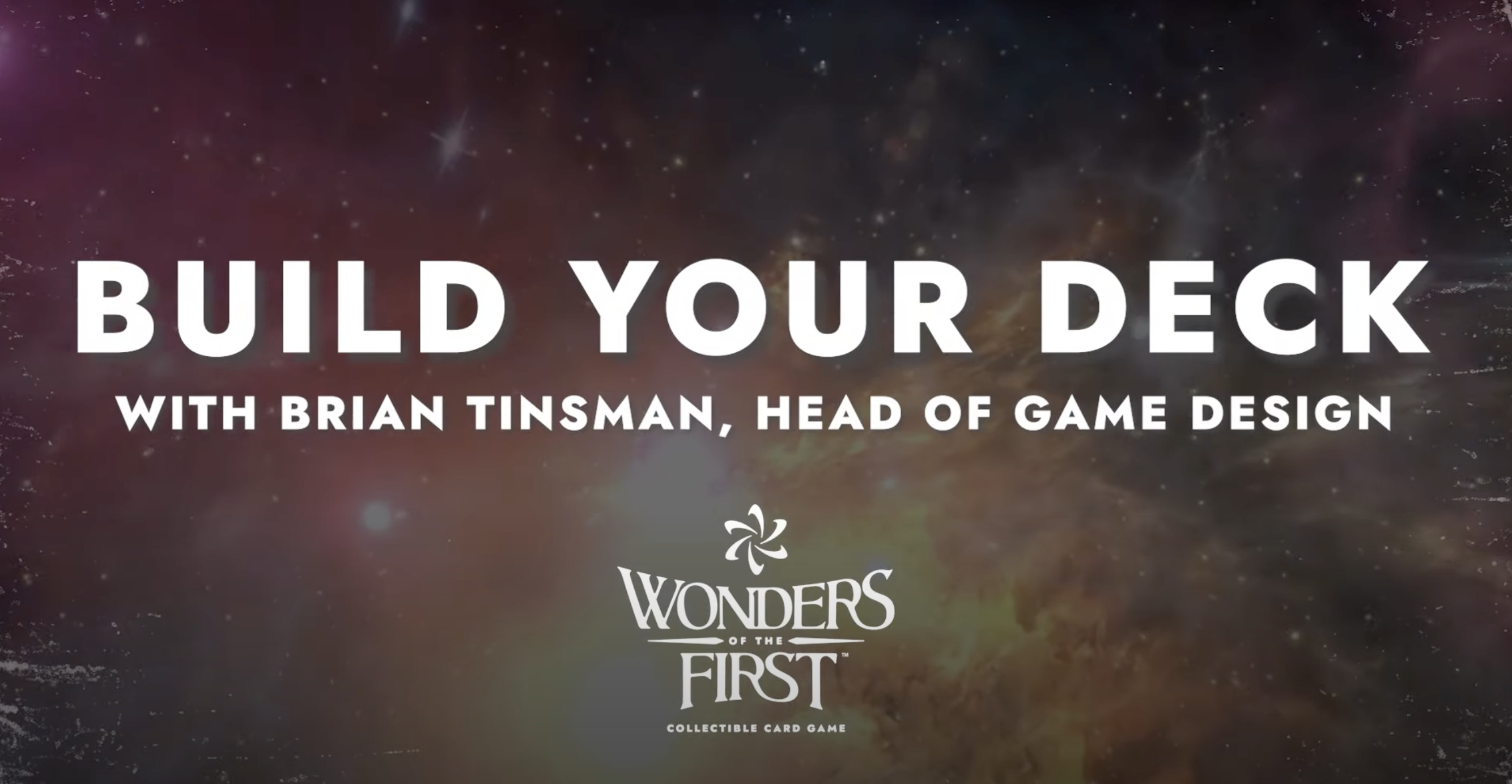
Deckbuilding Fundamentals
The Fundamentals Of Deckbuilding
Today we will discuss the fundamentals of deckbuilding including a blueprint for the number of Wonders, spells, items, and lands. We will discuss how the Orbital Link affects the cards you can play and the difference between single Orbital and multi-Orbital builds.
We’ll start with the basic rules. Decks are 50 cards. You can have three of each Secondary, two of each Primary and one of each Legendary. That means while Legendary cards might be more powerful, the three of cards are more reliable as build-arounds. Almost every card in Wonders of The First belongs to an Orbital. The Orbitals are six worlds that are dimensionally connected to each other and beginning to intermix. You can put any combinations of Orbitals in your deck. They can be Wonders, items, spells, and lands. Lands are one of the most important factors in deck building.
When you play a card from your hand you spend energy and your lands can help reduce the energy cost of cards. Lands give you an Orbital Link. For example the Solfera land gives you Solfera Link. Orbital Link does two things: 1.) it gives you a blanket cost reduction to all cards of that Orbital. So your Manticore card would only cost four energy instead of five and 2.) it allows you to play core cards of that Orbital.
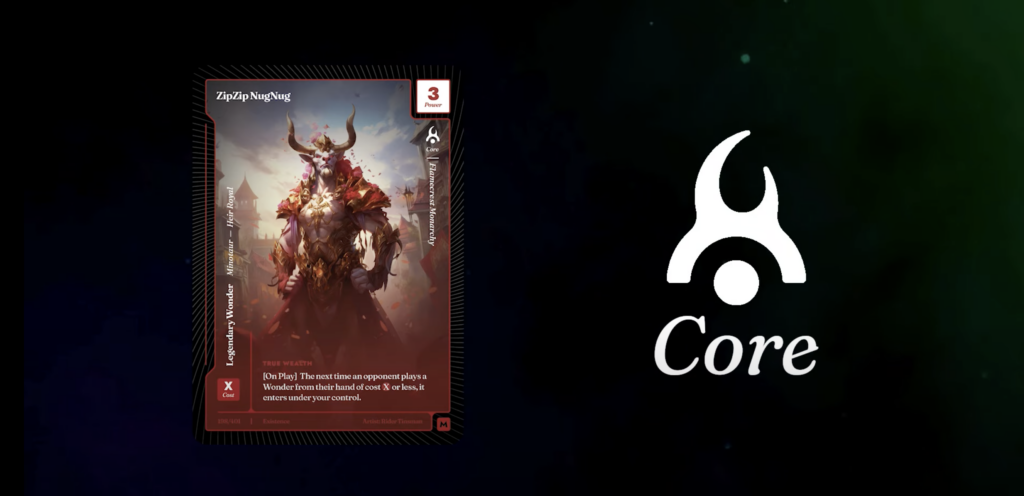
Some cards have the core restriction in the upper right. You can’t play a Solfera core card unless you already have Solfera Link somewhere on the board. So it’s possible you could play a deck with no lands at all. You just would be paying a bit more energy and you couldn’t play core cards. You’ll probably notice that if you don’t draw any lands in the first few turns you might be a bit behind in energy but you’ll still be able to play cards for their full cost.
One thing to remember is that Orbital Links don’t stack. Once you have a second Solfera land you won’t get a minus two cost reduction but you will get extra benefits from those lands (like harvesting them for actions.)
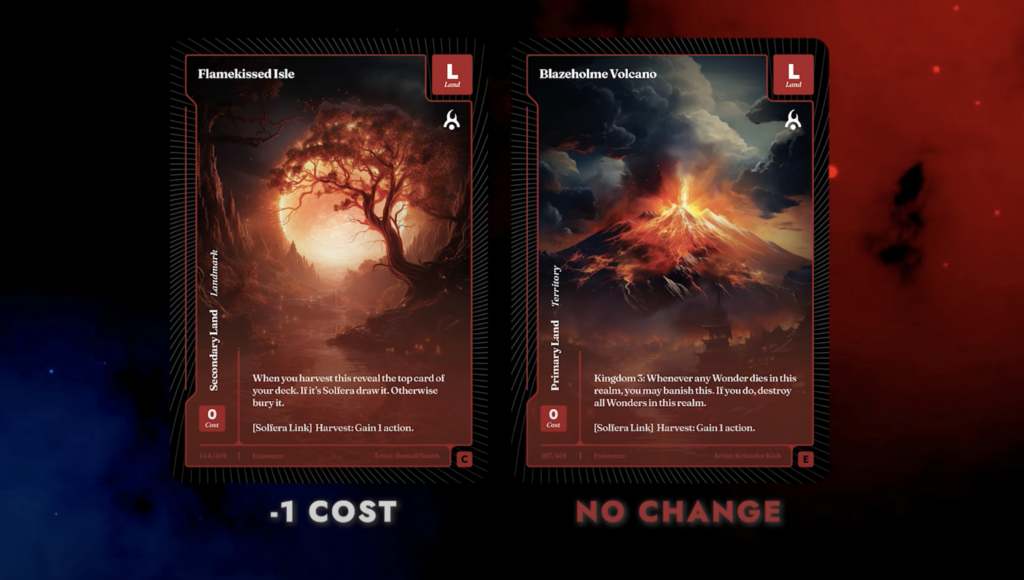
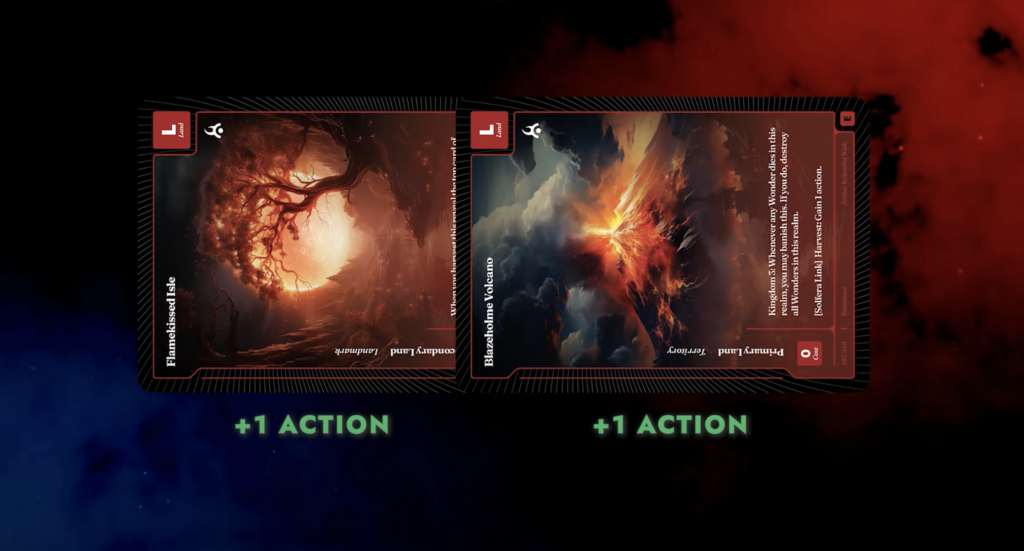
Kingdom Ability
One other interesting thing about lands is the Kingdom ability. Kingdom means that if you have enough lands on the board their ability will become active so if you want your Kingdom abilities c1early you should add more lands to your deck.
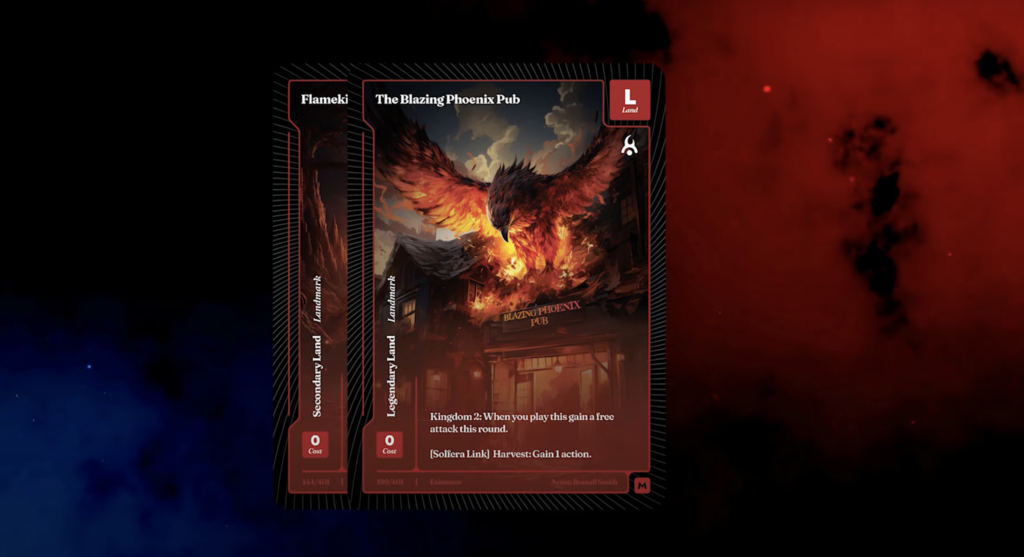
One last point is that Orbital Link will work no matter where you play it. The location of lands on the board generally doesn’t matter unless you are sitting across Drogothar the Destroyer. A dragon who destroys any land or item he wants to in the same realm.

But back to deckbuilding!
How Many Lands To Put In Your Deck?
How many lands should you put in your deck? Our playtesters have had the most success with about eight lands for aggressive decks. Specially if you only have core cards from one Orbital. If you want a deck with core cards from multiple Orbitals it might play a little slower and we suggest starting around 10 or 11 lands.
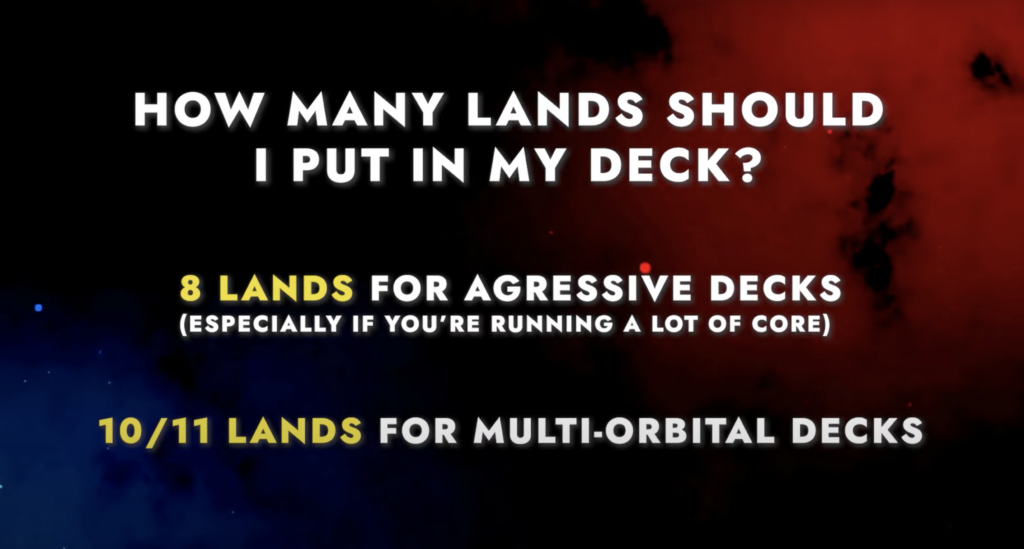
Basic Blueprint
That brings us to our basic blueprint. A good starting blueprint is 30 Wonders, 4 spells, 6 items, and 10 lands. Assuming you have about 10 core cards and those core cards are across two Orbitals. Remember this is just a starting place and you should experiment to find your own favorite deck structure.
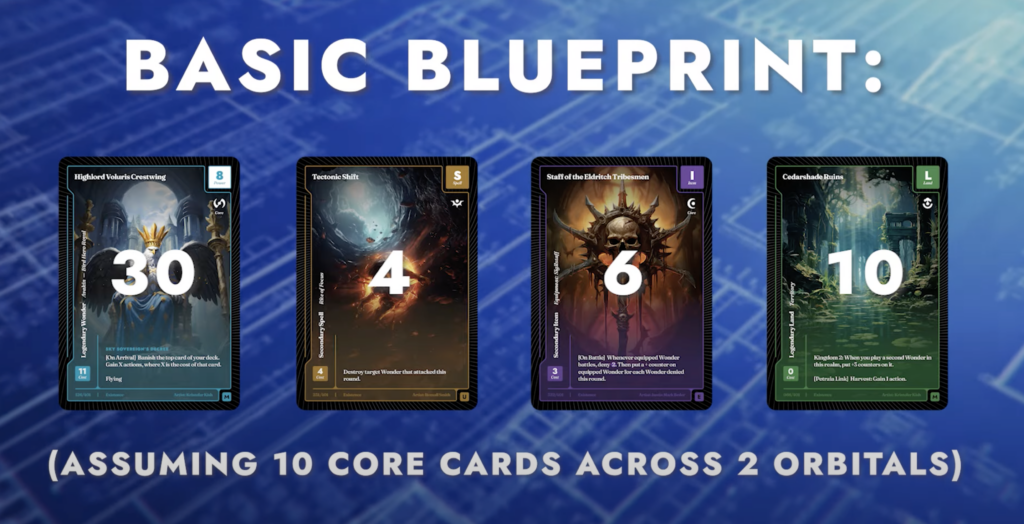
Spells
Spells are useful for removal and other effects. You may face enemy cards that can potentially dominate the game and you’ll want some ways to deal with them whether it’s through destruction, nullification, or portaling them out of the way.
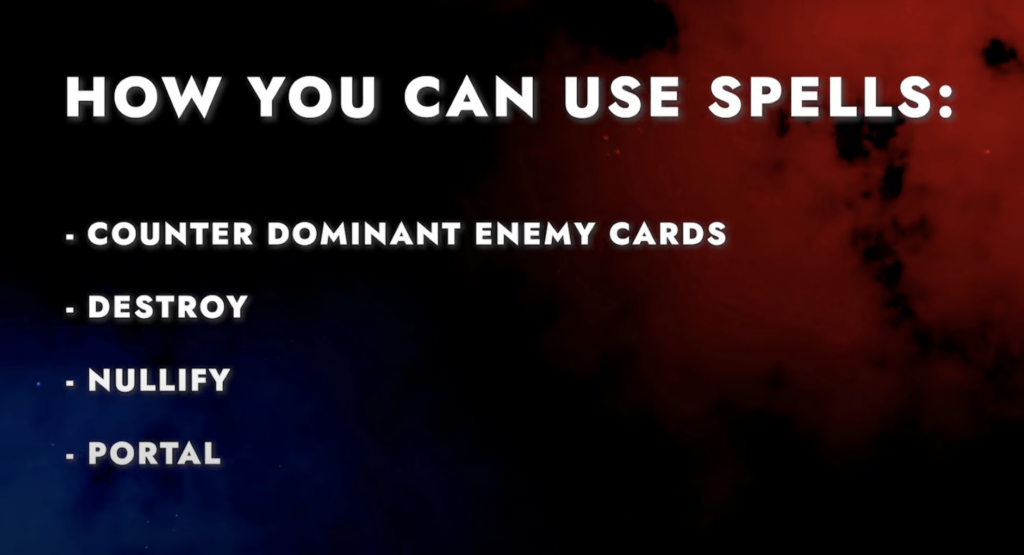
INTO THE ABYSS
Let’s take a look at the demo deck called Into The Abyss. Umbrathene is especially strong at destroying enemy Wonders. This deck has the card Blasting Duel, which directly destroys a Wonder. It also has the card End a Bloodline, which destroys every Wonder of any class you want (like Beast or Viking.) It also has the Summon Crushing Rock, which destroys all Wonders in a realm of your choice including your own. And there’s also Energy Extraction which destroys an item.
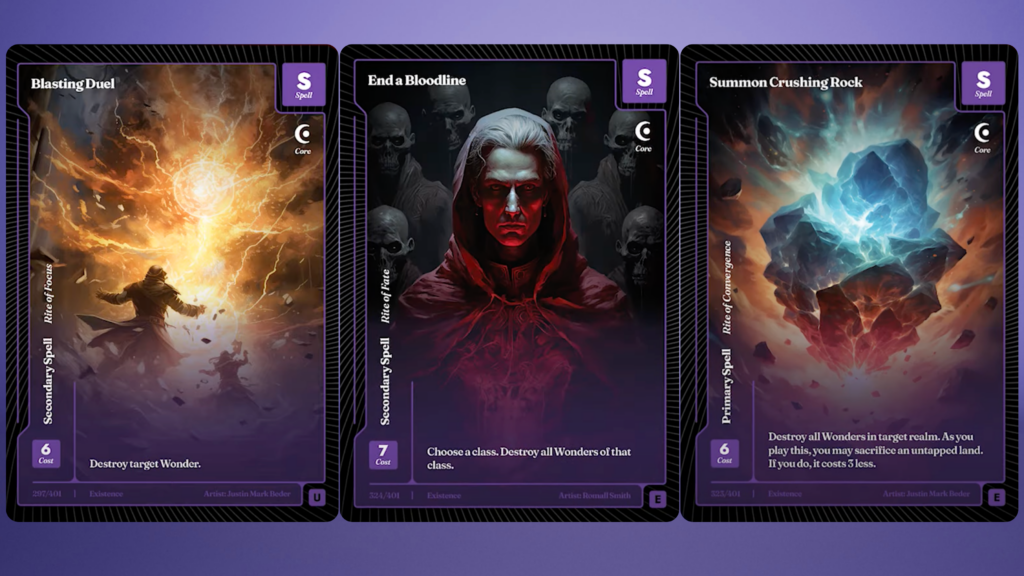
Once the card database is public you’ll be able to look up the balance score of each card in your deck to determine your deck’s dynamic balance score. This will let you compare your deck’s power level with other decks. You can swap out cards until it’s at the score you want. (To learn more about DBS, check out this video.)
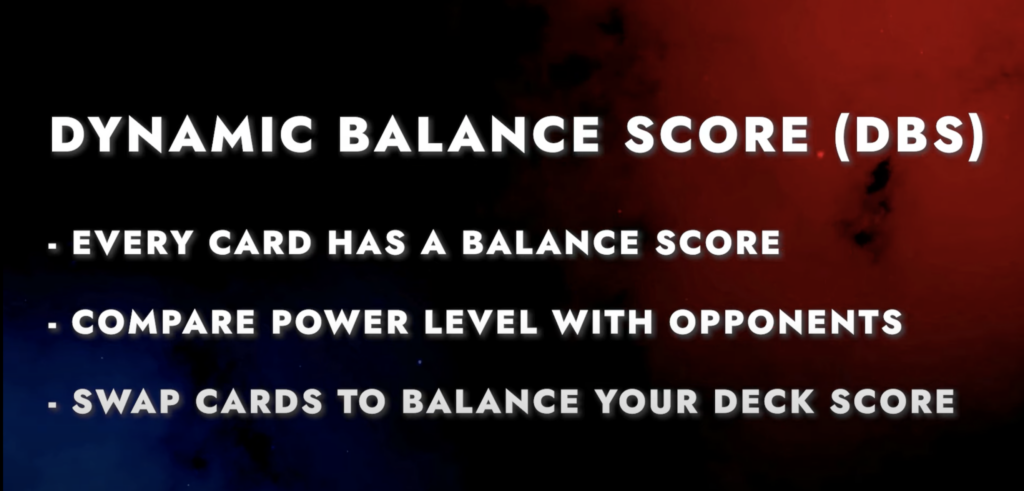
These scores will change occasionally to balance the meta and that adds another dimension to deck building whenever the balance scores change you can choose whether you want to change your deck or not.
That’s our quick guide to deck building! Let us know in the comments if you like our basic blueprint or if you prefer a different structure. Have fun building!


